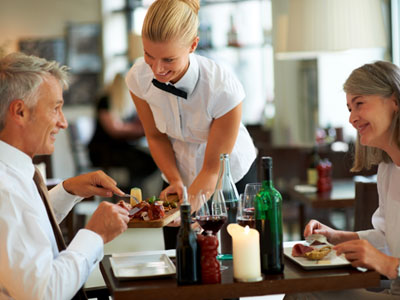Repeat Customers and How to Keep Them
If you work in the restaurant industry, there’s good news and bad news. The good news is a majority of operators in the industry said repeat customers made up a larger amount of 2012 total sales than they did in 2011, according to the National Restaurant Association’s Restaurant Trends Survey. However, the bad news is that despite this encouraging stat, operators have found it harder to keep customer loyalty going compared to two years ago.
Repeat customers make up a vital part of a restaurant chain’s success, so maintaining loyalty should be a company priority. Thankfully, the loyalty numbers are still pretty positive. For example, 64% of casual-dining customers and 63% of family-dining customers are repeat customers, according to the survey. While these numbers are good, they could be better, and there are ways individual chains can increase the size of their returning customer base on top of simply providing good food and service.
Customer Engagement

One way to set guests on the path toward loyalty (or even brand advocacy) is to interact with them outside of the conversations they have with the wait staff. To accomplish this, you can use technology and creativity to make an effective, engaging product or campaign that gives customers something to remember about your restaurant. Instead of having the restaurant simply function as a location, set it up so that it’s an experience.
"You can use technology and creativity to make an effective, engaging product or campaign that gives customers something to remember about your restaurant."
For example, if there’s a 40-minute wait for a table, you’re already losing the guests, who’re sitting around thinking of the wait (not to mention their hunger). Research regarding the psychology of lines has shown that people tend to overestimate how long they’ve been waiting by about 36%, according to an article in The New York Times. It also mentions a scenario in which people complained about the line at baggage claim because they spent most of their time standing and waiting for the luggage. M.I.T. operations researcher Richard Larson explained in the article that "unoccupied waiting" seems longer than "occupied waiting," so when the baggage claim was farther way from the plane, the wait didn’t seem as long because people were walking with a purpose instead of standing around.
Similarly, don’t let your guests sit in your restaurant, thinking only of when their buzzers will sound. Instead, set up a tablet with a customized application about the restaurant. The app could include anything from an interactive menu to fun food trivia to a history of the restaurant or town. Any of these reading materials and activities would pass the time and give your guests a positive impression of your establishment right off the bat. You can apply this concept to other aspects of the guest experience, like creating digital menus or feedback forms. Consider what your guests would want and what could also benefit business.
Customer Loyalty Programs
In early 2012, about 30% of restaurant operators were using frequent-diner programs, according to the NRA’s 2012 Restaurant Industry Forecast. While the number may be larger now, it’s important that restaurants not only start a loyalty program but also pay careful attention to what kind of program they launch. It’s staying one step ahead — and not merely keeping up with the pack — that will position a restaurant as a leader in the industry.
For example, instead of causing clutter in people’s wallets, take advantage of the mobile application trend and consider how you can encourage customers to digitally engage with their loyalty account. This will be more convenient for your guests because they’ll most likely have their smartphones on them (as opposed to a square piece of paper), and it allows you to offer content through a medium they’re used to regularly accessing.
The most important thing is to avoid hastily creating a loyalty plan just to have one; make sure you’ve paid attention to the details. For example, if you decide you want to go with a point system, the decisions don’t stop there. A study showed that when people were 80% of the way toward their free item, they were more satisfied and more likely to recommend the programs that involved higher point numbers (even though the number of visits were equal). So basically, they favored having 800/1,000 points to having 80/100. Program details like this shouldn’t be overlooked — consider the best ways for your particular restaurant to show appreciation and reward the customers in a unique way.
Mobile programs and applications make customer engagement easier and more appealing. If you decide to simply pass out punch cards or allow the dining experience to be an average one, you’re opening up the possibility that people will try somewhere else next time. Catch their attention, provide great service and show them you truly appreciate their business, and they’ll be more likely to turn up again and again.
